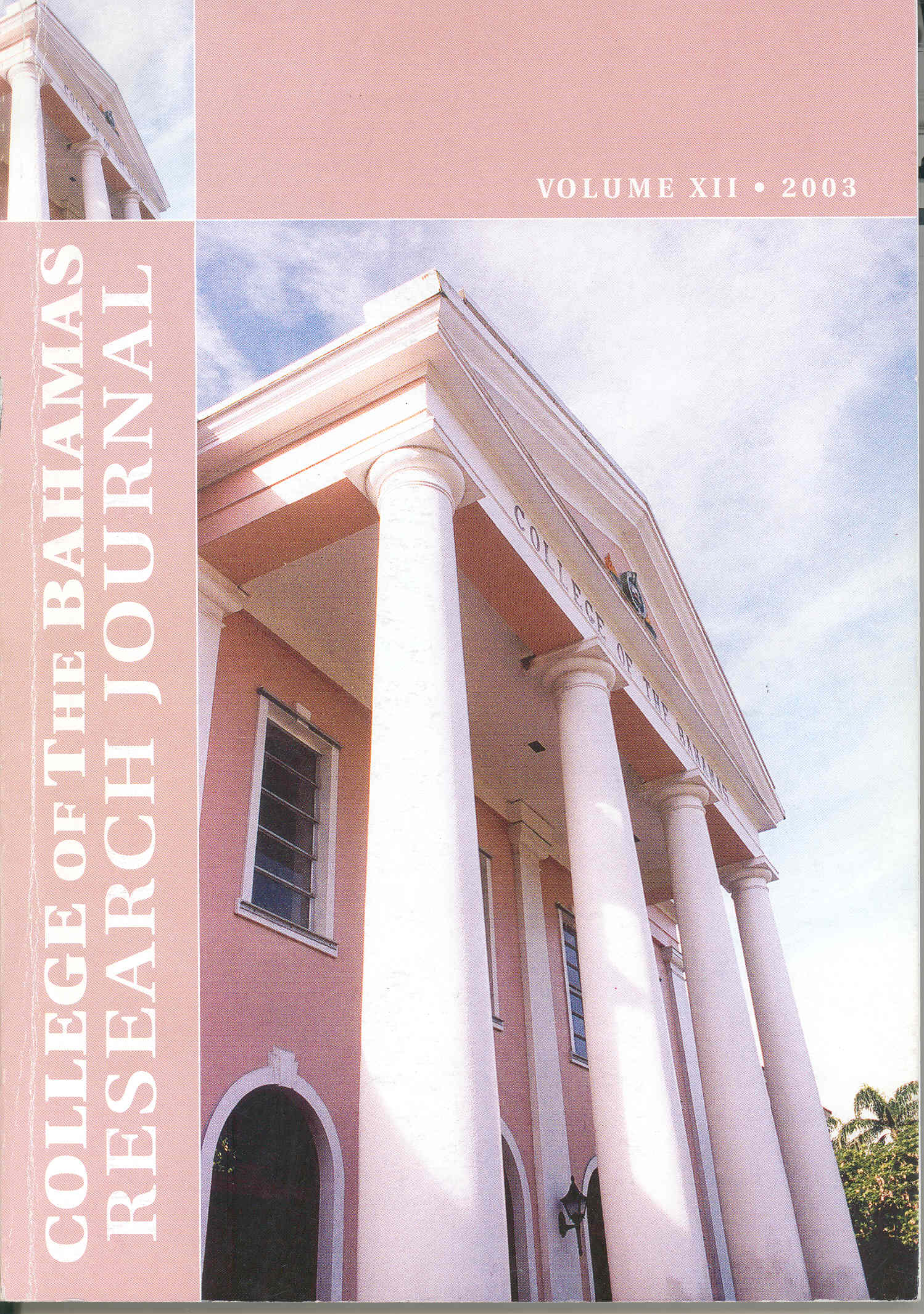Language Education and Bahamian Students' Compositions
DOI:
https://doi.org/10.15362/ijbs.v13i0.57Abstract
The teaching of Standard English (SE) composition in the Bahamas is not without its challenges in the context of the sociolinguistic situation. Many Bahamian students' Standard English compositions exhibit "interference" from vernacular Bahamian, either Bahamian English Creole or Bahamian Dialect. In this study, I attempt to clarify issues of Creole/dialect interference in the Standard English writing of college-based English compositions providing some linguistic explanations for many of the so-called "errors of grammar" in the compositions of Bahamian students. In order to fulfill the linguistic needs of all Bahamian students and to ensure greater success in Standard English performance in the Bahamian public schools, I propose that language educators consider TESD - Teaching English as a Second or Other Dialect -- for the Bahamian context. However, TESD would dictate a re-examination of our present language education methodologies and our linguistic assumptions about the acquisition of Standard English conventions by the Bahamian school age population. Moreover, I attempt to answer two major questions about the frequency and distribution patterns of the "errors of grammar" and non-standard features recurrent in students' expository compositions. I also explore possible linguistic factors that can account for such distribution. Furthermore, by analyzing specific samples of college-based compositions from The College of The Bahamas, my preliminary results indicate considerable levels of linguistic interference from vernacular Bahamian, especially within the SE lexicon.References
Bahamas National Task Force on Education. (1994). National task force on education: Final report. Government Printing.
Carrington, L. (1983). The challenge of Caribbean language in the Canadian classroom. TESL Talk, 14(4), 15-27. (EJ295264). ERIC. https://eric.ed.gov/?id=EJ295264
Craig, D. (1980). Models for educational policy in Creole-speaking communities. In A. Valdman, & A. Highfield (Eds.), Theoretical orientations in Creole studies, (pp. 245-266). Academic Press.
Crystal, D. (1991). A dictionary of linguistics and phonetics. Blackwell Publishers.
Crystal, D. (1999, March 9). The future of English: A Welsh perspective [Paper presentation]. 33rd Annual TESOL Convention, New York. https://www.davidcrystal.com/Files/BooksAndArticles/-4030.pdf
Gray, B. Q. (1975). Dialect interference in writing: A tripartite analysis. Journal of Basic Writing, 1(1), 14-22. https://clearinghouse.colostate.edu/jbw/v1n1/gray.pdf
Halliday, A. (1994). Appropriate methodology and social context. Cambridge University Press.
Holm, J. (1988). Pidgins and Creoles, Vol.1: Theory and Structure. Cambridge University Press.
Holm, J. A., & Shilling, A. W. (1982). Dictionary of Bahamian English. Lexik House. https://www.dloc.com/IR00000128/00001
Kachru, B. (1985). Institutionalized second-language varieties. In S. Greenbaum (Ed.), The English language today (pp. 211-226). Pergamon Press.
Kachru, B. (1992). The other tongue: English across cultures. (2nd ed.). University of Illinois Press.
Larsen-Freeman, D., & Long, M. (1991). An introduction to second language acquisition research. Longman.
Lawlor, A. (1996). Bahamian English or Bahamian Creole?: A sociohistorical investigation. College Forum, 8, 1-12. https://doi.org/10.15362/ijbs.v8i0.21
Major, M. V. (1993). Some non-standard features of college writing: Evidence fora second dialect approach to English language teaching in the Bahamas [Unpublished master’s thesis, Southern Illinois University at Carbondale].
Nayar, P. B. (1997). ESL/EFL dichotomy today: Language politics or pragmatics? TESOL Quarterly, 31(1), 9-37. https://doi.org/10.2307/3587973
Pakir, A. (1999). Connecting with English in the context of internationalization. TESOL Quarterly, 33(1), 103-114. https://doi.org/10.2307/3588193
Rampton, M.B. (1992). Scope for improvement in sociolinguistics? In D. Cameron (Ed.), Researching language: Issues of power and method (pp. 29-64). Routledge.
Sato, C.J. (1989). A nonstandard approach to Standard English. Tesol Quarterly, 23 (2), 259-282. https://doi.org/10.2307/3587336
Selinker, L. (1992). Rediscovering interlanguage. Longman.
Shannon, S. M. (1995). The hegemony of English: A case study of one bilingual classroom as site of resistance. Linguistics and Education, 7(3), 175-200. https://doi.org/10.1016/0898-5898(95)90022-5
Thomas-Ruzic, Maria. (1999, June/July). English and TESOL in times of change: As a second (or foreign, alternative, additional, international, native, standard,…?) language (or dialect). TESOL Matters ,9(3). https://web.archive.org/web/20040220024042/http://www.tesol.org/isaffil/intsec/columns/199906-al.html
Winer, L. (1982). An analysis of errors in the written English compositions of Trinidadian English Creole speakers [Doctoral dissertation. University of the West Indies, Trinidad and Tobago]
Winer, L. (1992). TESD. In T. McArthur (Ed.), The Oxford companion to the English language. Oxford University Press.
Winford, D. (1976). Teacher attitudes toward language varieties in a creole community. International Journal of the Sociology of Language, 8, 45-75. https://doi.org/10.1515/ling.1976.14.175.45

